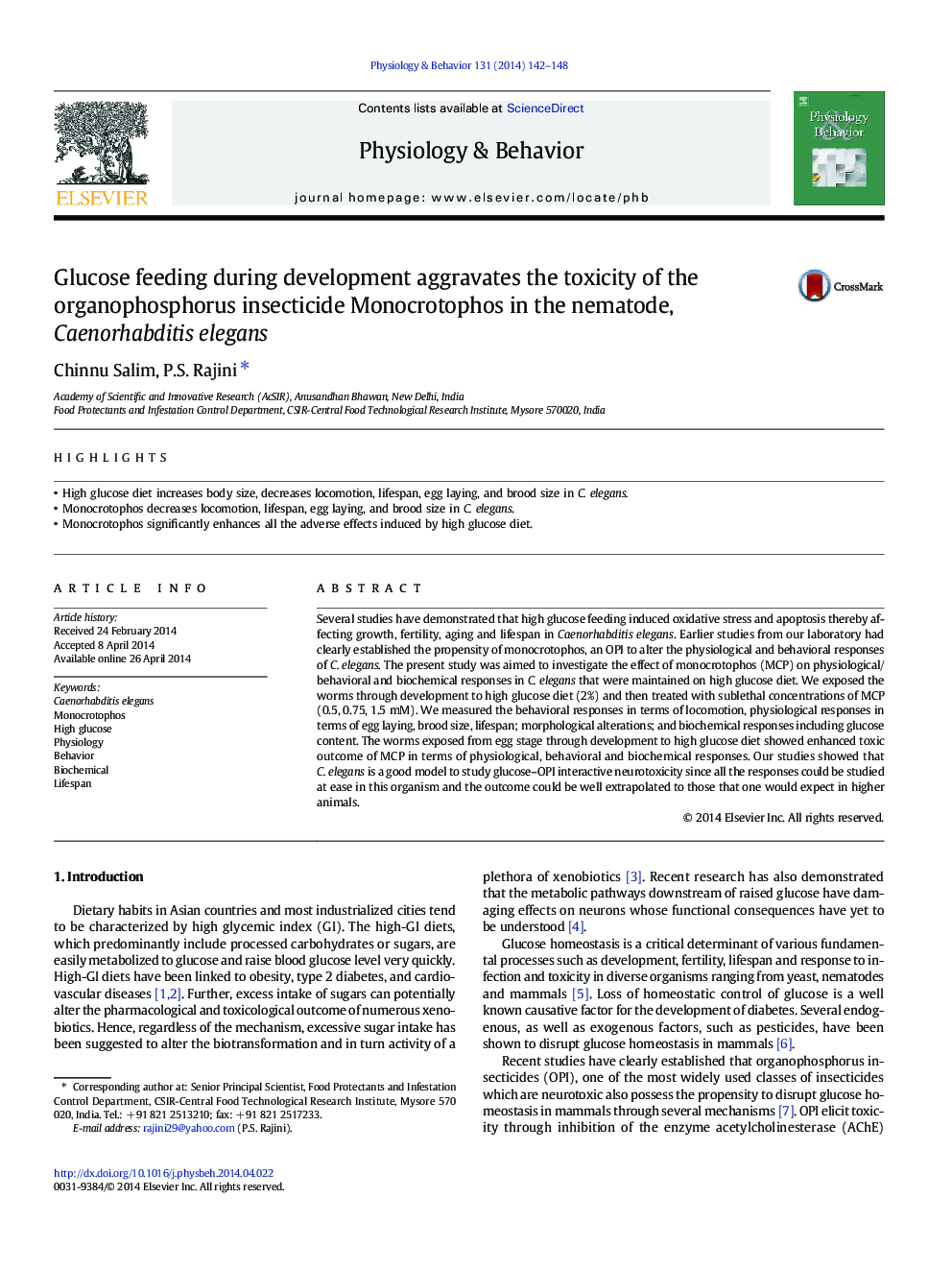| Article ID | Journal | Published Year | Pages | File Type |
|---|---|---|---|---|
| 5924096 | Physiology & Behavior | 2014 | 7 Pages |
â¢High glucose diet increases body size, decreases locomotion, lifespan, egg laying, and brood size in C. elegans.â¢Monocrotophos decreases locomotion, lifespan, egg laying, and brood size in C. elegans.â¢Monocrotophos significantly enhances all the adverse effects induced by high glucose diet.
Several studies have demonstrated that high glucose feeding induced oxidative stress and apoptosis thereby affecting growth, fertility, aging and lifespan in Caenorhabditis elegans. Earlier studies from our laboratory had clearly established the propensity of monocrotophos, an OPI to alter the physiological and behavioral responses of C. elegans. The present study was aimed to investigate the effect of monocrotophos (MCP) on physiological/behavioral and biochemical responses in C. elegans that were maintained on high glucose diet. We exposed the worms through development to high glucose diet (2%) and then treated with sublethal concentrations of MCP (0.5, 0.75, 1.5Â mM). We measured the behavioral responses in terms of locomotion, physiological responses in terms of egg laying, brood size, lifespan; morphological alterations; and biochemical responses including glucose content. The worms exposed from egg stage through development to high glucose diet showed enhanced toxic outcome of MCP in terms of physiological, behavioral and biochemical responses. Our studies showed that C. elegans is a good model to study glucose-OPI interactive neurotoxicity since all the responses could be studied at ease in this organism and the outcome could be well extrapolated to those that one would expect in higher animals.
